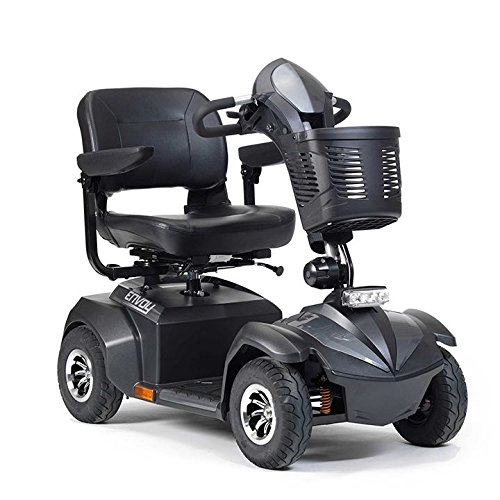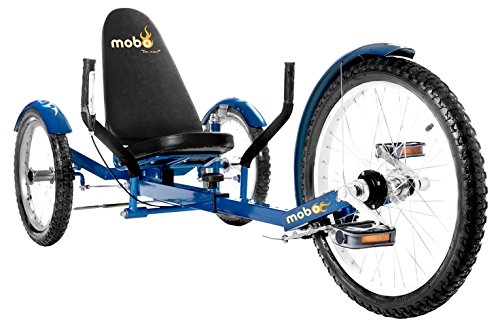The Most Hilarious Complaints We've Received About Mobility Devic…
페이지 정보
Writer Hershel 작성일25-02-10 00:09 View6 Reply0본문
 Fleet Management and Smart Mobility
Fleet Management and Smart MobilitySmart indoor electric mobility scooter offers alternative transportation options to private cars and encourages carpooling. It also improves sustainability by decreasing traffic congestion and pollution.
These systems require high-speed connectivity between devices and road infrastructure as well as centralized systems. They also require sophisticated algorithms and software to process data gathered by sensors or other devices.
 Safety
SafetyMany smart mobility solutions are developed to address a variety of modern city challenges, including air quality, sustainability, and road security. These solutions help reduce congestion in traffic and carbon emissions, as well as facilitate access to transportation options for residents. They also can improve fleet management and provide users with more convenient transportation options.
Since the concept of smart mobility is relatively new, there are still some hurdles to overcome before these technologies can be fully implemented. This includes ensuring the security of smart devices and infrastructure, creating user-friendly interfaces, and implementing strong data security measures. To encourage users to adopt it is essential to understand the needs and tastes of different types of users.
One of the most important aspects of smart mobility is its capacity to integrate with existing infrastructure and systems. Sensors can provide information in real-time and improve the performance of systems by connecting them to vehicles roads, transportation systems, and other components. These sensors can monitor conditions in the weather, health of vehicles and traffic conditions. They also can detect and report problems with roads, like bridges or potholes. This information can be used to optimise routes, reduce delays, and minimise the impact on travelers.
Smart mobility also offers the benefit of enhancing safety for fleets. Through advanced driver alerts and collision avoidance systems, these technology can help reduce accidents caused by human error. This is especially important for business owners whose vehicles are used to transport products and services.
By enabling more efficient use of transportation infrastructure and vehicles Smart mobility solutions will reduce fuel consumption and CO2 emissions. They can also promote the use of lightweight electric mobility foldable scooter cars which will reduce pollution and contribute to cleaner air. In addition smart mobility could provide alternatives to private automobile ownership and encourage the use of public transportation.
As the number smart devices increases an extensive system for protecting data is required to ensure security and privacy. This includes setting clear guidelines for what data is gathered and how it is shared. Additionally, it involves implementing robust security measures, regularly re-updating systems to protect against new threats, and making sure there is transparency regarding data handling practices.
Efficiency
There's no question that the urban mobility ecosystem is in need of an urgent upgrade. The soaring levels of congestion, pollution, and wasted time that characterize city transportation can affect businesses and the quality of life for citizens.
Companies that provide solutions to modern logistical and transportation issues will be able to benefit of an expanding market. But, these solutions must include intelligent technology that can assist in solving key issues like traffic management, energy efficiency, and sustainability.
The concept behind smart mobility solutions is to use a range of technologies in cars and urban infrastructure to increase the efficiency of transportation and reduce the number of accidents, emissions and the cost of ownership. These technologies produce a huge amount of data that must be connected together to be analyzed in real time.
Many of the technologies that are employed in transportation have built-in connectivity. Ride-share scooters, which can be unlocked and purchased using apps or QR codes, autonomous vehicles, and smart traffic lights are examples of such technology. These devices can also be connected to each other and centralized systems through the use of sensors and wireless networks with low power (LPWAN) and eSIM cards.
This means that information can be shared in real time and swift actions taken to alleviate issues like road accidents or traffic congestion. This is possible thanks to advanced machine learning algorithms and sensors data that analyzes data to discover patterns. These systems also can predict future problems and provide advice for drivers on how to avoid them.
Many cities have already implemented smart mobility strategies to reduce pollution and traffic congestion. Copenhagen is one of them. It uses intelligent traffic signs that prioritize cyclists during rush hour in order to cut down on commute time and encourage cycling. Singapore has also introduced automated buses that follow designated routes using sensors and cameras to maximize public transport services.
The next phase of smart mobility will be based on intelligent technology including artificial intelligence and huge data sets. AI will enable vehicles to communicate with one with each other and with the environment around them, reducing reliance on human driver assistance and optimizing vehicle routes. It will also allow intelligent energy management, which will be able to predict renewable energy generation and assessing potential risk of leaks and outages.
Sustainability
Traditionally, the transportation sector has been affected by inefficient traffic flow and air pollution. Smart mobility provides a solution to these problems, with a range of benefits that enhance the quality of life of people. It allows people to use public transportation instead of driving their own car. It makes it easier to locate the best route and reduces traffic for users.
Smart mobility is also environmentally friendly and provides alternative energy sources that are sustainable to fossil fuels. These options include car-sharing as well as ride-hailing and micromobility alternatives. They also permit users to drive electric mobility scooters for adults near me vehicles and integrate public transportation services into the city. Additionally, they decrease the need for personal vehicles as well as reducing CO2 emissions, and improving air quality in urban areas.
The digital and physical infrastructure required for the installation of smart mobility devices can be complex and costly. It is crucial to ensure that the infrastructure is safe and secure and is able to withstand attacks by hackers. The system must also be able to meet the needs of users in real-time. This requires a huge level of autonomy in decision-making that is difficult because of the complexity of the problem space.
A large number of stakeholders also participate in the creation of smart mobility solutions. Transportation agencies as well as city planners and engineers are among them. All of these stakeholders must be able to work together. This will allow the development of more sustainable and better solutions that will be beneficial to the environment.
The failure of sustainable, smart mobility systems, in contrast to other cyber-physical systems like gas pipelines, could have serious economic, social and environmental effects. This is because of the necessity of matching demand and supply in real-time and the storage capabilities of the system (e.g., energy storage), and the unique mix of resources that make up the system. In addition, the systems must be able to handle large amounts of complexity and a vast variety of possible inputs. They require a different IS driven approach.
Integration
Fleet management companies must embrace technology to be in line with the new standards. Smart mobility offers better integration efficiency, automation, and safety in addition to boosting performance.
Smart mobility encompasses a range of technologies and could refer to anything with connectivity features. Ride-share scooters, which can be access via an app are a great example. Autonomous vehicles and other transport options are also becoming popular in recent years. The concept can also be applied to traffic lights and sensors for roads, as in addition to other elements of the city's infrastructure.
Smart mobility seeks to develop integrated urban transportation systems that increase the quality of life of people, increase productivity, decrease costs, and also have positive environmental impact. These are often high-risk objectives that require collaboration between city planners, engineers, and experts in technology and mobility. The success of implementation will ultimately be determined by the specific circumstances in each city.
For example, it may be essential for a city invest in a larger network of charging stations for Cheap Electric Mobility Scooter vehicles, or to upgrade the bike lane and pathways to ensure safety when biking and walking. It can also benefit from traffic signal systems that adapt to changing conditions, reducing the amount of traffic and delays.
Local transportation operators can play an important role in coordinating these initiatives. They can create applications that let travelers purchase tickets for public transportation such as car-sharing, bike rentals and taxis through a single platform. This can make it easier to travel around, and it will also encourage people to choose more sustainable options for transportation.
MaaS platforms can also offer an easier way commuters can move around the city, depending on their needs at any given moment. They can opt to take a car-sharing trip for a quick trip to the city for instance, or they can rent an electric travel mobility scooters bike for a longer trip. These options can be combined into a single app that displays the entire route from door to door and allows users to switch between modes.
These kinds of integrated solutions are the tip of the iceberg when it comes to the implementation of smart mobility. In the near future cities will have to connect all their transportation systems and provide seamless connections for multimodal journeys. Artificial intelligence and [Redirect-302] data analytics will be utilized to improve the flow of goods and people and cities will be required to assist in the development and production of vehicles that are able to communicate with their surroundings.
Reply List
No message.

